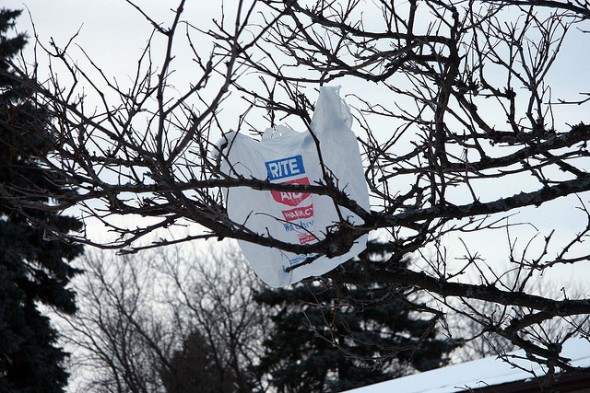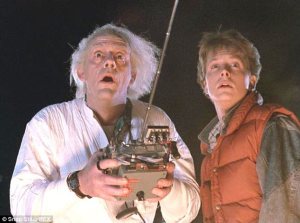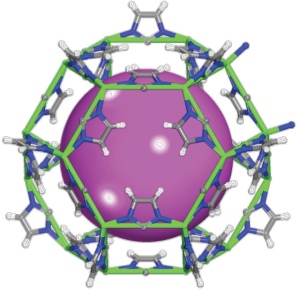Not Without A Fight
Posted: October 26, 2014 Filed under: Environmental Issues | Tags: American Progressive Bag Alliance, bag ban, California, Decriminalization, LL Bean, Marijuana, Missouri, Recycling, Reusable Bags, Sierra Club Leave a commentGovernor Jerry Brown of California recently signed into law the ban of one-time use, disposable thin plastic grocery bags. But that is not the end of it. Yep, the bag people are going to fight it all the way into a public referendum.
The latest salvo I found rather humorous – “What’s more controversial, legalizing pot or criminalizing plastic bags ?” I can appreciate this statement because I did come of age at the tail end of the 1960s. Enough said. I don’t believe the analogy is appropriate however.
Anyone with even the most modest awareness realizes that several states have decriminalized the possession, even the growing and the sale of marijuana even though all of that remains illegal at the federal level. Don Loepp of Plastics News references an article and some comments in the Missourian newspaper from Columbia, MO. It seems that not only was the Columbia City Council deciding on more relaxed laws and policy towards marijuana but they were also presented with a single-use plastic bag ban petition that would encourage the use of paper or reusable bags by a representative of the Sierra Club and a University of Missouri at Columbia biology professor.
One commentor to the Missourian newspaper article shares my perspective and my behavior – “re-usable tote bags …, which are typically neither paper nor plastic (they’re fabric) and are re-usable AND can be laundered. Some such bags carry no cost, because they have ads for grocery stores, wineries and such on them. This method appears to be very ecological when grocery shopping, because you aren’t sending ANY bags to the landfill”. My bags have either been purchased from Whole Foods and given to me by the St Louis Zoo or other non-profit organizations as a kind of perk. I also have an awesomely large and strong bag from LL Bean that I received as a monogrammed gift from my brother and sister-in-law one Christmas.
However, I will also admit to recycling literally thousands (maybe tens of thousands) of PE grocery bags, mostly from WalMart who maintains a fixture for returning them. So, I am aware that these bags are recyclable and I can understand as a business person that they are a very fast and efficient way for the store to check people out. I am also aware of at least one woman’s death when an overloaded plastic bag broke in the parking lot sending a heavy canned good onto her foot resulting in more than one hospitalization, an infection and ultimately her death.
All of this to say that I do personally support bag bans. In California, the law has funds built into it to help manufacturers re-tool their factories to produce a multi-use bag. Even though the new law goes into effect in July 2015 banning single use plastic bags in California that hasn’t stopped an effort to repeal the law. The plastic bag industry has contracted with the American Progressive Bag Alliance to gather enough signatures for a referendum on the November 2016 ballot to repeal Senate Bill 270.
The ban involves excluding petroleum and biobased plastic bags that are light in weight and tend to “take flight” when not disposed of properly, according to Narcisa Untal, senior planner for Integrated Waste Management with Santa Clara county in California.
Establishments such as grocery and convenience stores will place a 10 cent fee on the paper bags or plastic bags that are made up of a high percentage of post consumer content. Shoppers can also bring in their own bag and avoid the fee.
Untal said revenue generated by the fee goes back to the businesses to recoup costs for purchasing the bags, promotion and marketing, and to help with regulatory reporting. The legislation also requires an operator of a store to establish an at-store recycling program that provides to customers the opportunity to return clean plastic carryout bags to that store. Plastic bags that are exempt include those for fruit and vegetables as well as those from the dry cleaners.
This law seems very reasonable to me !! The American Progressive Bag Alliance contends that the new law threatens nearly 2,000 well-paying California jobs in the plastic bag manufacturing and recycling industry and also represents a government-sponsored, billion-dollar transfer of wealth from working families to grocers in the form of fees on paper and thicker plastic bags; no money collected from bag fees will be used for environmental programs or for any public purpose.
It probably isn’t hard to determine – I’m on the side of the Bag Ban being upheld by the public will for the good of all of us !!
~ Information Resources
“What’s more controversial, legalizing pot or criminalizing plastic bags?” posted by Don Loepp at PlasticsNews on 10/22/14 – http://www.plasticsnews.com/article/20141022/BLOG01/141029974/whats-more-controversial-legalizing-pot-or-criminalizing-plastic
“Columbia City Council says no to marijuana, yes to new buildings” posted on 10/21/14 in The Missourian – http://www.columbiamissourian.com/a/180559/columbia-city-council-says-no-to-marijuana-yes-to-new-buildings/
“Group seeks signatures for referendum to repeal California’s plastic bag ban” posted by Melissa Murphy in the San Jose Mercury News – http://www.mercurynews.com/california/ci_26778357/group-seeks-signatures-referendum-repeal-californias-plastic-bag
LL Bean Boat and Tote Bag – http://www.llbean.com/llb/shop/33381?page=boat-and-tote-bag-open-top
***
Blog author ~ Deborah Hart Yemm is co-founder of
Yemm & Hart, a green materials producer
***
At The Edge of Strange
Posted: October 19, 2014 Filed under: Designing for the Future | Tags: bismuth selenide, computers, data storage, electrons, Lung Cancer, Molecular Cage Trap, Radon, speed, Time-reversal symmetry, topological insulators Leave a commentWho steals this treasure must contend with its flame
Where only the strange remain
Yea, only the strange remain
~ Mickey Hart – “Only The Strange Remain” on the Mystery Box
Science fascinates me though I’m not a scientific genius. I am in awe of the edge of possibility, of that fearlessness of scientists to go where no man has gone before, to push the envelope into the unknown and risk what isn’t known about what is discovered.
So recently my attention was attracted to an article in the Aug 23, 2014 issue of Science News by Andrew Grant titled “Weird materials find a practical use”. Finding out that the practical was based in something called “topological insulators” I thought first to learn more about them. So I went to Wikipedia – not the most respected scientific journal but something accessible to the common person who lacks specialized understandings.
The first thing I learned about these materials is that they have a time reversal symmetry. Time, now that is another aspect of life that fascinates me. Reversing time ? Symmetry ? Need to learn more !! James Clark Maxwell described a thought experiment that has been dubbed Maxwell’s Demon. So it is described this way – “a microscopic demon guards a gate between two halves of a room. It only lets slow molecules into one half, only fast ones into the other. By eventually making one side of the room cooler than before and the other hotter, it seems to reduce the entropy of the room, and reverse the arrow of time”.
Back to topological insulators – these materials behave like an insulator in their interiors but electrons are able to move on the surface. The surface states of topological insulators are special because they are symmetry protected by the conservation of their particle number and due to time reversal symmetry. What is really important to the “latest ideas for practical usage” is that electrons moving along the surface have their spin locked at a right-angle to their momentum (spin-momentum locking).

Silver colored surface is a superconducting quantum interference device which detects magnetic fields (red) created by an edge current (blue) in a topological insulator.
Time-reversal symmetry protected edge states were predicted to occur in quantum wells (very thin layers) of mercury telluride sandwiched between cadmium telluride in 1986 by Pankratov and observed in 2007. And in 2007, they were predicted to occur in three-dimensional bulk solids of binary compounds involving bismuth. Penn State condensed matter physicist Nitin Samarth wanted to do something useful with them and was inspired by the work of Dan Ralph another condensed matter physicist at Cornell University who wants to speed up the processes that currently limit speed and capacity in computer RAM and hard drives.
There are several components within a computer that help make it faster and more powerful. A computer with more memory (RAM) will be capable of storing more programs that are currently running in memory. If your computer runs out of memory, the computer must swap unused data stored in memory to your hard disk drive until it is needed again. This makes each task more complex by adding another extra step and because the hard drive is the slowest type of memory in the computer it will decrease the speed even more.
Most current hard drives store data as 1 and 0 based on magnetic orientation. Generating those magnetic fields is a relatively inefficient process. Ralph’s team built devices in which electrons brush past compass needles and because of their spin provide a subtle torque. The key to maximizing torque is generating currents of electrons with the same spin. Joining together the work of both Samarth and Ralph, they tested a theory that electrons racing across the surface of a topological insulator could manipulate a magnetic material by their spin. To do this, they layered a nickle-iron wafer atop the topological insulator bismuth selenide and sent an alternating current of electrons through the device. Each electron in the bismuth selenide exerted about 10 times as much torque as electrons in any other material tested so far. That torque would be sufficient for utilization in a memory device.
Shifting my focus now to be closer to home. At some point more than a decade ago we decided to test our home for radon with a little mail order kit. We were shocked to discover that our home had unacceptably high levels of radon. This is not good news because radon is a radioactive gas that can cause cancer. And what’s unsettling about this lethal invader is that you can’t see, taste or smell it’s presence. Radon is the second leading cause of lung cancer in the United States today and if you smoke tobacco and your home has high radon levels, then you’re at high risk for developing lung cancer.
We don’t smoke but we still don’t like knowing radon is here in our home. So, we installed a little fan in one window of our basement and opened up the little window at the opposite side. It’s the best we can do for now. We began a construction project which the lethargic economy has put on indefinite hold but you can believe that we have taken a proactive stance against even the possibility of radon ever being an issue in our construction planning.
The atomic radius of Radon is 1.34 angstroms and it is the heaviest known gas, nine times denser than air. Because it is a single atom gas (unlike oxygen, O2, which is comprised of two atoms) it easily penetrates many common materials like paper, leather, low density plastic, most paints, and building materials like gypsum board and sheetrock, concrete block, mortar, sheathing and tar paper, wood paneling, and most insulation materials.
So imagine the possibilities being explored by materials chemist, Andrew Cooper of the University of Liverpool in England. It was one of those unintended consequences that happen frequently in science. Cooper and his colleagues had set out to create a polymer. Instead, they produced a 3-D “cage”. This was accomplished by reacting 4 aldehyde molecules with 6 nitrogen-containing ones. The cages clumped together to form a multichambered atomic jail as reported in an article “Molecular cage traps rare gases” in the same Aug 23, 2014 issue of Science News by Beth Mole.
In their research, the scientists estimate that radon could only slip out 3% of the time, once it slipped in. While one of the applications could strip out xenon so valuable it sells for $5,000 a kilogram (and this is useful for it has applications in lighting, medical imaging and anesthesia), Cooper and his colleagues think the molecular traps could detect radon in homes. I think even further out, could this technology eventually “trap” radon to make our homes safer someday ?
~ Information Resources
Lyrics “Only The Strange Remain” by Mickey Hart on the Mystery Box cd – https://www.mickeyhart.net/music/lyrics/only-strange-remain
“Weird materials could make faster computers” by Andrew Grant posted 07/23/14 at Science News – https://www.sciencenews.org/article/weird-materials-could-make-faster-computers
“Topological Insulator” at Wikipedia – http://en.wikipedia.org/wiki/Topological_insulator
“T-symmetry” (the theoretical symmetry of physical laws under a time reversal transformation) at Wikipedia – http://en.wikipedia.org/wiki/T-symmetry
“What makes a computer fast and powerful ?” posted at Computer Hope – http://www.computerhope.com/issues/ch001380.htm
“Radon Fact Sheet” – http://www.radon.com/radon/radon_facts.html
“Molecular cage traps rare gases” posted by Beth Mole on 07/23/14 at Science News – https://www.sciencenews.org/article/molecular-cage-traps-rare-gases
***
Blog author ~ Deborah Hart Yemm is co-founder of
Yemm & Hart, a green materials producer
***
Fortunate Mistakes
Posted: October 12, 2014 Filed under: Materials Developments | Tags: Accidents, Chess, Cradle to Cradle, Dynamite, Malala Yousafzai, Mistakes, Nobel Peace Prize, Post-Its, Recycling, Space Station, Superplastics, Velcro Leave a comment“A discovery is said to be an accident meeting a prepared mind.”
~ Albert Szent-Györgyi, Nobel Prize-Winning Biochemist
Throughout the decades, many of the items of usefulness that we are fondly attached to have been created accidentally. I am absolutely dependent on Post-Its for my weekly grocery reminders. They fit nicely in my checkbook and at the store stick to the cart or the objects I put in the child carrier, since I don’t tote young children around with me anymore (my boys are both too big for that now). During the Occupy movement, Post-Its came in handy for sticking up quick notes.
In 1968, a scientist at 3M in the United States, Dr. Spencer Silver, was attempting to develop a super-strong adhesive. Instead he accidentally created a “low-tack”, reusable, pressure-sensitive adhesive. For five years, Silver promoted his “solution without a problem” within 3M both informally and through seminars but failed to gain acceptance. In 1974 a colleague who had attended one of his seminars, Art Fry, came up with the idea of using the adhesive to anchor his bookmark in his hymnbook. Fry then utilized 3M’s officially sanctioned “permitted bootlegging” policy to develop the idea. The original notes’ yellow color was chosen by accident, as the lab next-door to the Post-it team had only yellow scrap paper to use.
You’ve no doubt already heard the stories about how penicillin was developed by the thoughtless handling of a bacterial culture or that Velcro was inspired by those pesky burrs we pick out of our socks in Autumn. Velcro has even made the lives of space dwelling astronauts easier. Astronauts have used Velcro to keep track of personal items and even to play board games. One astronaut working at the International Space Station brought a chessboard with pieces lined with Velcro that could be anchored and removed from the board with ease. His main chess opponents: mission control correspondents on Earth. Cellophane was a failed attempt to develop a film coating to make cloth waterproof.
Recently, one such “accidental” discovery caught my eye in Science News (June 14, 2014 issue). Since our business is made possible by recycling efforts, stories about recycling are always of interest to me. According to a polymer chemist, Jeannette Garcia at IBM Almaden Research Center in San Jose CA, previously difficult if not impossible to recycle plastics have been revolutionized by a little tweak in a classic chemical reaction. It will now be possible to break down these engineered plastics into their original components, making them ready to reassemble all over again. Truly a cradle-to-cradle dream come true.
In our business, we have had to consider the alterations that each additional “heat history” produces. The standard method of recycling HDPE #2 and LDPE #4, even PP #5, is by melting the polymers at very high temperatures. While they don’t go into detail about how this breaking down process will be accomplished in the article that I read, they do say that it is completely different than the methods we are familiar with and therefore will not damage the material but allow it to remain pristine. The new thinking was made possible merely because Ms Garcia missed a step in following her chemical recipe. The result was a nearly unbreakable rock of thermoset plastic that remains stable up to temperatures as high as 350 degrees C. The material is accomplished by combining a superstrong plastic with a self-healing gel and is based upon combining nitrogen-containing molecules.
From dynamite to corn flakes to LSD, our world is different because of abundant mistakes. Recently, various Nobel Prizes have been announced, as they are every year. Alfred Nobel, who found a way by the accidental leakage of nitroglycerin to stabilize the highly explosive liquid form by creating a solid form that retained its power revolutionized the construction industry but also was used in war for destructive purposes. So saddened was Nobel by this, he left instructions to create the Nobel Peace Prize in his will. This year recognized its youngest recipient yet – Malala Yousafzai.
~ Information Resources
“Post-it note” from Wikipedia – http://en.wikipedia.org/wiki/Post-it_note
“Accidental discoveries” posted at Xperimania.net – http://www.xperimania.net/ww/en/pub/xperimania/news/world_of_materials/accidental_discoveries.htm
“Recyclable superplastics made with old chemistry” by Beth Mole posted May 15, 2014 at Science News – https://www.sciencenews.org/article/recyclable-superplastics-made-old-chemistry
“10 Accidental Inventions You Won’t Believe” by Marianne English posted Oct 22, 2013 – http://www.geniusstuff.com/blog/list/10-accidental-inventions/
***
Blog author ~ Deborah Hart Yemm is co-founder of
Yemm & Hart, a green materials producer
***










Recent Comments